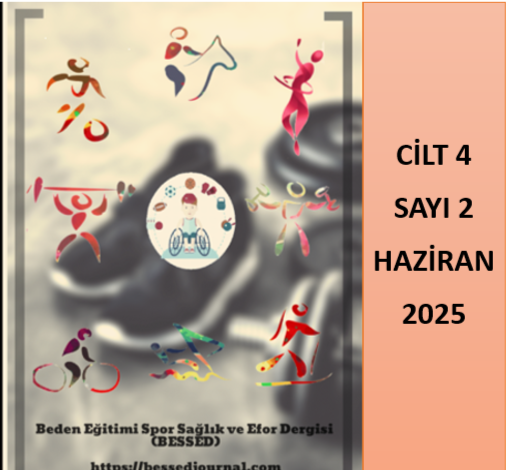Author :
Abstract
Isınma, müsabaka performansını akut olarak etkileyebilen önemli bir parametredir. Çalışmamız kapsamında dinamik ısınma (DI), foam roller (FR) ve titreşimli foam roller (TFR) uygulamaları ile yapılan ısınma yöntemlerinin tenis performansı üzerindeki akut etkileri sınanmıştır. Çalışmamızda, lisans düzeyinde antrenörlük bölümü tenis uzmanlık öğrencilerinden haftalık en az 16 saat tenis antrenmanı yapan (ortalama; yaş 23,39±2,79 yıl, boy uzunluğu 170,41±11,91 cm, vücut ağırlığı 71,38±16,83 kg) 14 sporcu yer almıştır. Katılımcılara 3 farklı günde 48 saat aralıklarla, ısınma protokolleri randomize olarak uygulanmış, ardından sırasıyla eklem hareket genişliği ölçümü, dikey sıçrama ölçümü ve tenise özgü testler olarak ITN testlerinden; yer vuruşları derinlik, vole derinlik, yer vuruşları kesinlik, servis ölçümü yapılmıştır. Verilerin analizinde, Friedman testi ve Wilcoxon işaretli sıralar testi kullanılmıştır. Çalışma sonuçlarına göre kalça hiperekstansiyonu bakımından, TFR yönteminde FR yöntemine oranla anlamlı olarak daha yüksek değerler saptanmıştır (p<0,05). Vole Derinlik testi bakımından, FR yönteminde DI yöntemine oranla anlamlı olarak daha yüksek değerler saptanmıştır (p<0,05). Servis testi bakımından, FR yönteminde DI yöntemine oranla anlamlı olarak daha yüksek değerler saptanmıştır (p<0,05). Isınma yöntemleri, tenise özgü testlerin toplamından elde edilen toplam skorlar açısından karşılaştırıldığında, FR yöntemi TFR ve DI yöntemine oranla anlamlı olarak daha yüksek değer ortaya çıkartmıştır (p<0,05). Sonuç olarak çalışmamız kapsamındaki FR yöntemi akut olarak tenis performansını DI ve TFR yöntemine oranla daha yüksek bir düzeye çekmektedir. Farklı ısınma yöntemleri ve farklı şiddetteki foam roller uygulamaları ile ileriki araştırmalarda farklı sonuçlar ortaya çıkabilir.
Keywords
Abstract
Warm-up is an important parameter that can acutely affect competition performance. In this study, the acute effects of dynamic warm-up (DI), foam roller (FR) and vibrating foam roller (TFR) applications on tennis performance were tested. In our study, we used undergraduate tennis specialization students (mean age 23.39±2.79 years, height 170.41±11.91 cm, body weight 71.38±16.83 kg) who practiced tennis for at least 16 hours per week. 14 athletes were included. Warm-up protocols were randomly applied to the participants on 3 different days at 48-hour intervals, followed by joint range of motion measurement, vertical jump measurement, and ITN tests as tennis-specific tests; groundstroke depth, volley depth, groundstroke accuracy, and serve measurement were performed. Friedman test and Wilcoxon signed-rank test were used to analyze the data. According to the results of the study, significantly higher values were found in the TFR method compared to the FR method in terms of hip hyperextension (p<0.05). In terms of volley depth test, significantly higher values were found in FR method compared to DI method (p<0,05). In terms of the serve test, significantly higher values were found in the FR method compared to the DI method (p<0,05). When the warm-up methods were compared in terms of the total scores obtained from the total of tennis-specific tests, the FR method revealed significantly higher values than the TFR and DI methods (p<0.05). As a result, the FR method within the scope of our study acutely improves tennis performance to a higher level compared to DI and TFR methods. Different results may emerge in future studies with different warm-up methods and foam roller applications of different intensity.
